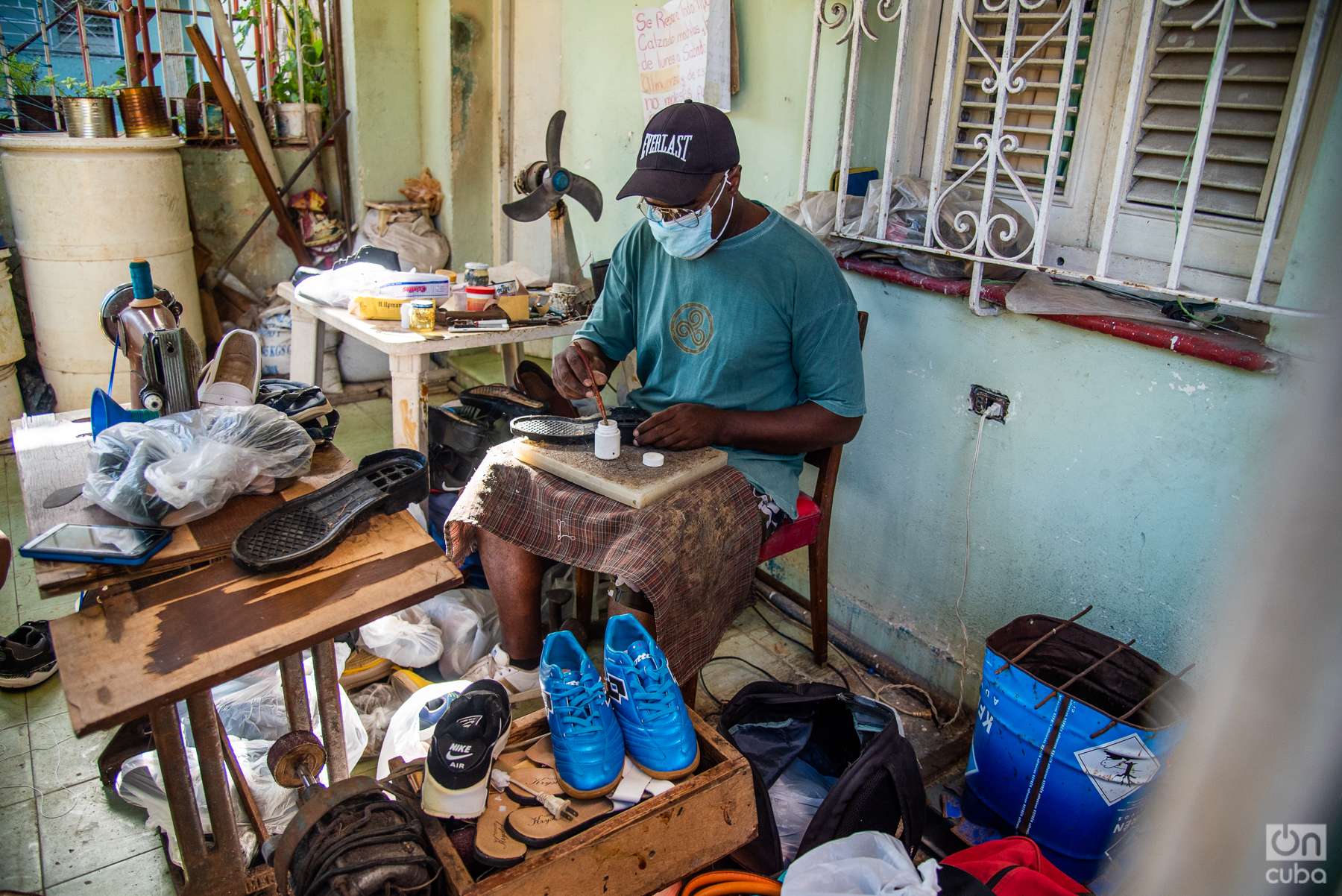The economy, after all, is a system that communicates even when there are no signs of that communication; that it reacts, either endothermically or exothermically —although at the moment we do not feel the change in temperature—; that needs incentives or disincentives, correctly aligned, to stimulate the positive or to diminish what is not convenient —whether temporary or not— to its operating dynamics.
In the recent sessions of the National Assembly it has been known that this year the growth in gross domestic product 2% compared to 2021; although this still does not mean that the values of before the pandemic are achieved.
The Minister of Economy, Alejandro Gil, acknowledged that “we have not reached the projected levels, but we are not going back either. The measures do not achieve all the results, but we are advancing in solutions”. It’s not a surprise. By mid-year the originally planned 4% rate had already been rectified downwards.
Growing up is definitely important. How much you grow, where you grow, and how you grow is even more important. This official information, when it is public, will even make it easier to understand how achievable the goals set for 2023 can be.
FIHAV results?
The economy is forecast to reach a 3% growth in 2023 and that the pillars of this planned growth will be the reactivation of national productive activities and a greater capture of foreign currency from exports. The arguments used to support the purpose are the control of COVID-19, the positive results of the Díaz-Canel international tour and those of the Havana International Fair.
Continuing to control the coronavirus pandemic is essential and it is something for which there is sufficient experience and, especially, the necessary vaccines to keep the population immunized. Prevention is the best way to do it.
The achievements of Díaz-Canel’s international tour, undoubtedly important, will also depend on the capacity and ingenuity necessary to materialize them and get the most out of them. It is a more complex exercise that requires, among other things, a better functioning of the economy.
But it is striking that the results of the Havana International Fair are identified as one of the bases for growth.
The fact that foreign businessmen are interested in possible business in Cuba is not news. This has been the case for years, despite the inefficient and uninspiring regulatory framework, the repeated delay in correcting it, the sustained delay in paying debts and honoring dividends, the high country risk, giant obstacles such as the blockade, and obstacles to high resilience generated by prejudices and persistent bureaucratism.
However, historically there has been a great distance between “expressed interest” and materialized interest. I have never seen any public information that allows us to know of all those business intentions —and, especially, investments— “expressed” by foreign companies, how many became businesses or investments.
In Cuba, converting a good intention into an investment project takes a long time; then turning the project into a reality, into a producing asset, takes another big stretch of patience.
How much of those interests expressed at other fairs have turned into good business in less than a year? What radical changes have been introduced in the Cuban norm and in its procedures to reduce the negotiation and signing of an investment project to thirty days?
What tourism can, and what it can’t
A more dynamic recovery of tourism is a good goal to achieve. What is the linear occupancy rate with which you end 2022? How much is the income per tourist? How much of each dollar of income is dedicated to importing today?
What is the multiplying effect of hotel investments on the national economy, if the imported component of the projects is considerably high, including the labor force?
What are the incentives left to hotel companies so that they can operate in a decentralized way? And so that national producers are “stimulated” to sell their products to hotels?
What is the real time of recovery of the investment of the new hotels with the occupancy rate that exists today? How many rooms out of order are there today?
What is the strategy to compete in the regional market?
In the year 2022 it was “planned” to reach 2.5 million tourists; then that amount was corrected downwards. In the end, we will only manage to get closer to 1,800,000 tourists. This 2022, the Dominican Republic will reach the record number of 7 million.
Mixed signals on SMEs
It is striking that another factor in favor of the expected growth, as has been said, is “the diversification and complementarity of economic actors”.
Although it is true that from 2023 they will be able to value their expenses at the market rate and not at the rate of 24 CUP per dollar, the National Assembly has just approved the proposal of the Ministry of Finance and Prices that eliminate tax incentives for the creation of new SMEs and generates uncertainty for those that are created and operating.
“Based on the need for all economic actors to contribute to generating income to finance social services and programs, the tax exemption for MSMEs is without effect for a period of six months when they arise from a reconversion and one year when they are newly created, established as of 2023. MSMEs established previously and that are enjoying this benefit, keep it until the end of the period for which it was granted.”
The measure constitutes a barrier to the creation of new companies of this type, something that draws attention after the success that the opening of the sector has had and the expectations declared about it: “Some 4,000 new players are expected in the economy, with a participation in the GDP between 12% and 14% at current prices”, explained Minister Alejandro Gil in his speech before the Assembly.
It will also reduce the growth of the tax base, depriving the budget itself of future new tax revenue, through the new MSMEs.
This is inconsistent with the need to increase supply and boost economic growth using the country’s strengths. In the same way, a reduction in the possibilities of promoting new chains should be expected from the birth of enterprises.

Echoes in the employment structure
The measure will have a negative impact on employment dynamics. This year it is planned to reach 4,676,000 employed persons. If the employment structure is maintained as up to now, around 50% work in the budgeted sector and the rest in the business system. More than 40% is employed in the non-state sector, which has contributed positively to employment dynamics.
Any element that slows down or discourages the creation of new SMEs will negatively impact the dynamics of employment in the country. As productive employment is one of the basic elements that promote equity on sustainable bases, it is very difficult to understand the measure adopted.
Eliminating the tax exemption for newly created SMEs and MSMEs, at this time, damages the business environment and the confidence of the new players.

While international experience, and especially Latin America, shows that this sector requires tax incentives, in our country, after a year of successful performance, a policy that does exactly the opposite is adopted.
It is not possible to deny the need to increase tax collection or contribute so little to social programs, something that “non-state actors” had already been doing. However, very little was disclosed about other measures to improve fiscal performance.
It’s not just about raising
Improving the allocation of fiscal spending is just as important as increasing tax revenue. It is known that our state apparatus is excessive for the size of our economy; that a part of the current expenses goes to the productive sector, which contributes to keeping inefficient companies alive.
Reducing and improving the allocation of spending is a necessity to improve the performance of the economy. The reform of that apparatus and the redimensioning of that state business system should not continue to be postponed.
There is the experience of the early 1990s when the state apparatus and the business system were drastically resized to reduce the budget deficit.
How is it that the success of a policy is answered with policies aimed at stopping it? Sometimes it seems that walking into the future we could return to the Stone Age.
















